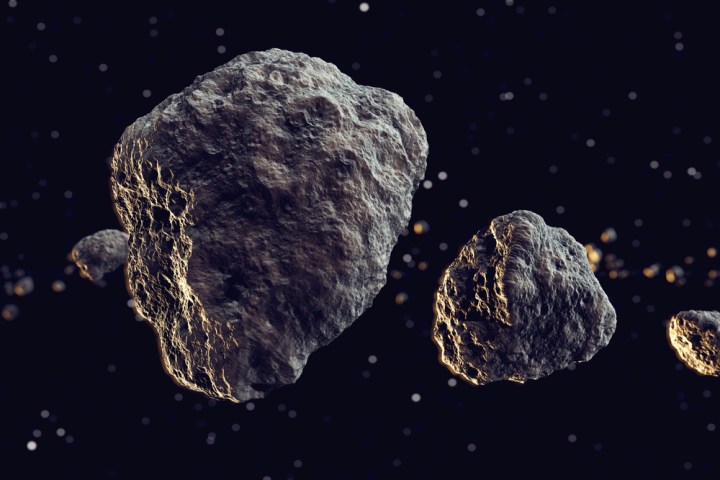
The asteroid in question is the 65803 Didymos, a rather intimidating asteroid system that involves a smaller asteroid orbiting its big brother. But fret not — AIDA is here to save the day with two separate spacecrafts, one European and one American. In a two-step process, the ESA and NASA seek to study and subsequently destroy the incoming system — in 2020, ESA will launch Asteroid Impact Mission (AIM), the first of the two spacecrafts, in order to take notes regarding the orbit of both Didymos and little brother Didymoon (the orbiting one). Once AIM has come back with the information, NASA will launch the Double Asteroid Redirection Test (or DART, for short), in 2022.
And then DART will ram itself into Didymoon
It’s not the most elegant solution, but it’s pretty glorious and decidedly American in its brute display of sheer strength. And really, the purpose of the project is to see just how much strength is actually necessary when it comes to deflecting an asteroid. “To deflect an asteroid that may be on an impact path with the Earth,” Lindley Johnson of NASA told The Daily Beast, “we simply must either speed up its orbital velocity a small amount or slow it down a small amount.” Johnson continued, “But if you were add or subtract just an inch per second of velocity to the asteroid, that will over time change the position of the asteroid in its orbit enough that in a couple of years the asteroid will miss the Earth.” So now, we just need to figure out “how much force is required to impart that inch per second of velocity change.”
Despite their considerable presence in sci-fi movies and the collective public safety conscience, asteroids aren’t the best understood extraterrestrial objects, which is something AIDA is looking to change. “To protect Earth from potentially hazardous impacts, we need to understand asteroids much better,” said Patrick Michel, head of the AIM team, at the European Planetary Science Congress. “AIDA will be the first mission to study an asteroid binary system, as well as the first to test whether we can deflect an asteroid through an impact with a spacecraft.”
Godspeed, rocket scientists. You may just need it.
Editors' Recommendations
- Watch NASA’s capsule with asteroid samples hurtling to Earth
- NASA’s Psyche spacecraft almost ready for launch to weird metal asteroid
- NASA has a plan to fix Lucy spacecraft’s solar array problem
- NASA’s new moon rocket to depart launchpad after failed test
- NASA still struggling to fuel its Space Launch System rocket


